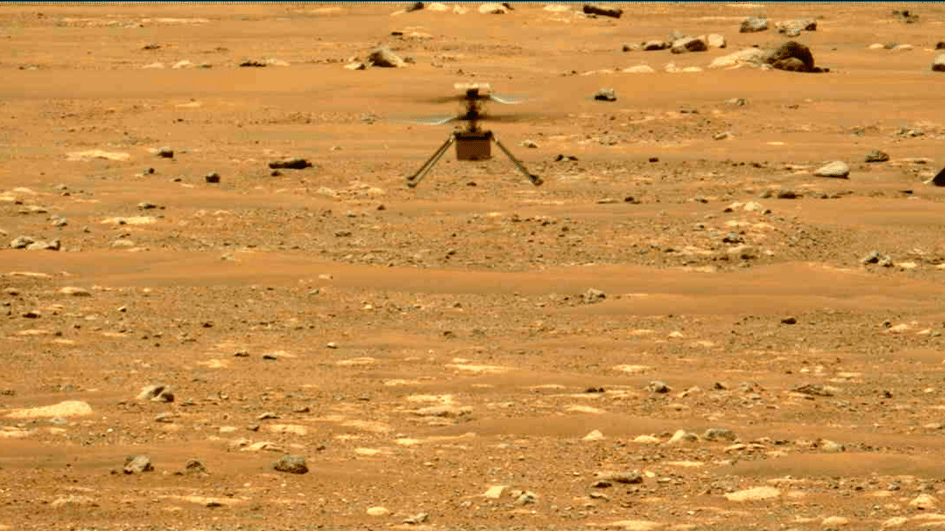NASA helicopter's mission ends after three years on Mars
WASHINGTON

NASA's Ingenuity Mars helicopter, which made history by achieving the first powered flight on another world, has officially ended its nearly three-year mission after sustaining rotor damage during its last outing, the space agency said on Jan. 25.
The tissue-box sized aircraft, which hitched a ride to the Red Planet under the belly of the Perseverance rover, first lifted off the surface on April 19, 2021.
Originally intended only to prove flight was possible in the ultra-thin Martian atmosphere through five test runs, Ingenuity went on to be deployed a total of 72 times, logging more than two hours of flight time in short hops.
"The Ingenuity absolutely shattered our paradigm of exploration, introducing this new dimension of aerial mobility," Lori Glaze, the director of NASA's Planetary Science Division told reporters on Jan. 25.
Its mission evolved to act as an aerial scout to assist its wheeled companion in searching for signs of ancient microbial life from billions of years ago when Mars was much wetter and warmer than today.
Ingenuity's longevity surpassed all expectations, defying challenges including dust storms, treacherous terrain, a dead sensor and frigid conditions.
Designed to operate in springtime, its solar-powered heating system was unable to remain on throughout the night in winter, which led to the flight computer freezing over and forced engineers to devise new protocols.
"It is bittersweet that I must announce that Ingenuity, the little helicopter that could... has now taken its last flight on Mars," said NASA administrator Bill Nelson in a video message.
"Like the Wright brothers, what they did back here on Earth at the early part of the last century, Ingenuity has paved the way for future flight in our solar system, and it's leading the way for smarter, safer human missions to Mars and beyond."
















